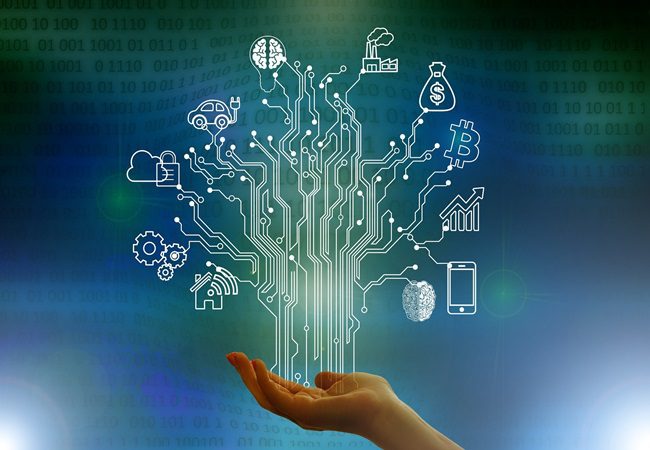Introduction:
In the ever-evolving landscape of Artificial Intelligence (AI), one of the groundbreaking technologies that has garnered significant attention is Natural Language Processing (NLP). NLP bridges the gap between human language and computer understanding, opening up new frontiers in human-computer interaction. This article delves into the realm of Natural Language Processing, exploring its applications, challenges, and the transformative impact it has on the way we communicate with machines.
Understanding Natural Language Processing:
At its core, Natural Language Processing is a subfield of AI that focuses on the interaction between computers and human language. The goal is to enable machines to understand, interpret, and generate human-like text or speech. NLP encompasses a broad spectrum of tasks, ranging from simple language understanding to more complex applications like machine translation, sentiment analysis, and chatbot interactions.
The Role of NLP in Human-Computer Interaction:
Voice Assistants and Conversational Interfaces:
Voice-activated assistants like Siri, Alexa, and Google Assistant owe their functionality to NLP. These systems can comprehend spoken language, interpret user commands, and respond in a coherent and contextually relevant manner. The seamless interaction with these voice assistants represents a paradigm shift in how we engage with technology.
Text Analysis and Sentiment Recognition:
NLP plays a crucial role in text analysis, extracting valuable insights from vast amounts of textual data. Sentiment analysis, a subset of NLP, allows machines to discern the emotional tone of written text, gauging sentiments such as happiness, frustration, or dissatisfaction. This capability is invaluable for businesses seeking to understand customer feedback and market trends.
Machine Translation and Multilingual Communication:
NLP has revolutionized language translation by enabling machines to translate text or speech from one language to another accurately. This has profound implications for global communication, breaking down language barriers and fostering collaboration across diverse linguistic backgrounds.
Chatbots and Virtual Assistants:
Chatbots, powered by NLP algorithms, are transforming customer service and user engagement. These virtual assistants can understand user queries, provide information, and even execute tasks based on natural language inputs. The result is a more user-friendly and responsive interaction between humans and machines.
Applications of NLP Across Industries:
Healthcare:
In the healthcare sector, NLP is utilized for extracting valuable information from medical records, research papers, and clinical notes. This aids in disease diagnosis, treatment planning, and medical research, contributing to more efficient and accurate healthcare practices.
Finance:
Financial institutions leverage NLP for sentiment analysis of market news and social media data. This helps in making informed investment decisions and understanding market trends. Additionally, NLP facilitates efficient processing of financial documents and enhances customer interactions in the banking sector.
E-commerce:
NLP enhances the e-commerce experience by powering recommendation engines, chat-based customer support, and sentiment analysis of customer reviews. Understanding user preferences through NLP allows e-commerce platforms to offer personalized product recommendations, improving customer satisfaction and driving sales.
Education:
In education, NLP contributes to language learning applications, automated grading systems, and intelligent tutoring systems. It assists educators in analyzing student performance, providing personalized feedback, and tailoring educational content to individual learning styles.
Challenges in Natural Language Processing:
Ambiguity and Context Understanding:
Natural languages are inherently ambiguous, and the same words can have different meanings based on context. NLP systems face challenges in accurately interpreting context and disambiguating between multiple potential meanings, leading to occasional errors in understanding.
Cultural and Linguistic Nuances:
NLP models may struggle with cultural and linguistic nuances, slang, or colloquial expressions that vary across regions and communities. Adapting NLP systems to diverse linguistic landscapes poses a challenge in achieving true language understanding.
Data Bias and Ethical Considerations:
The data used to train NLP models may contain biases, leading to unintended consequences such as reinforcing stereotypes or discriminatory behavior. Addressing these biases and ensuring ethical considerations in NLP development are critical for responsible AI deployment.
Lack of Common Sense Understanding:
While NLP systems excel at processing specific language patterns, they often lack common sense understanding. Machines may struggle to grasp implicit meanings, humor, or nuanced communication that humans effortlessly comprehend.
Future Directions and Opportunities:
Advancements in Deep Learning:
Deep learning, particularly through neural networks, has propelled NLP to new heights. Ongoing advancements in deep learning architectures enhance the ability of NLP models to capture complex linguistic patterns, improving language understanding and generation capabilities.
Multimodal NLP:
The integration of NLP with other modalities, such as images and videos, is an emerging area known as multimodal NLP. This approach aims to enable machines to understand and generate content across various mediums, paving the way for more comprehensive and context-aware interactions.
Explainable AI in NLP:
Addressing the ‘black box’ nature of AI, particularly in NLP, is a focus area for researchers. Developing explainable AI models ensures that the decisions made by NLP systems are transparent and interpretable, instilling trust and facilitating better human-machine collaboration.
Personalized and Context-Aware Systems:
Future NLP systems will likely evolve towards greater personalization and context-awareness. Tailoring interactions based on individual preferences, previous interactions, and real-time context will result in more intuitive and user-friendly experiences.
Conclusion:
Natural Language Processing stands at the forefront of human-computer interaction, revolutionizing the way we communicate with machines. From voice assistants to sentiment analysis and language translation, NLP has become an integral part of diverse industries. While challenges persist, ongoing advancements and a commitment to responsible AI development open up exciting possibilities for the future. As NLP continues to enhance our ability to interact with technology, the synergy between human language and artificial intelligence promises a future where communication is more intuitive, inclusive, and seamlessly integrated into our daily lives.

































